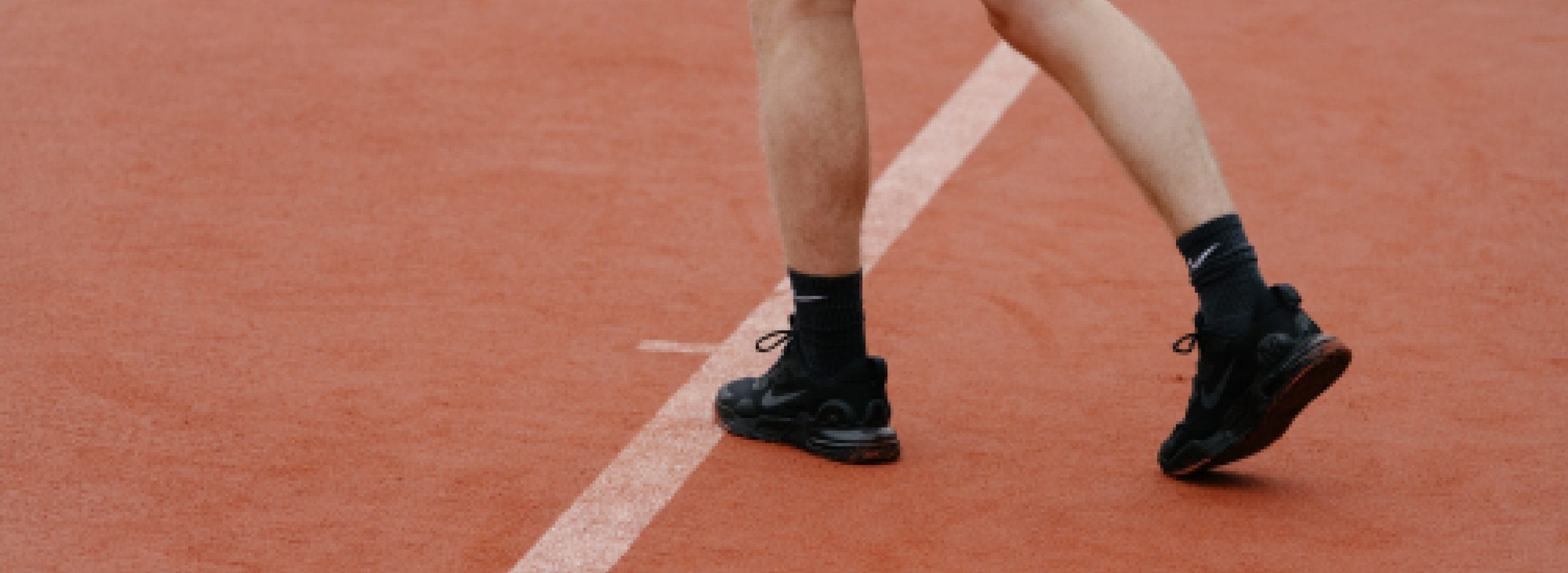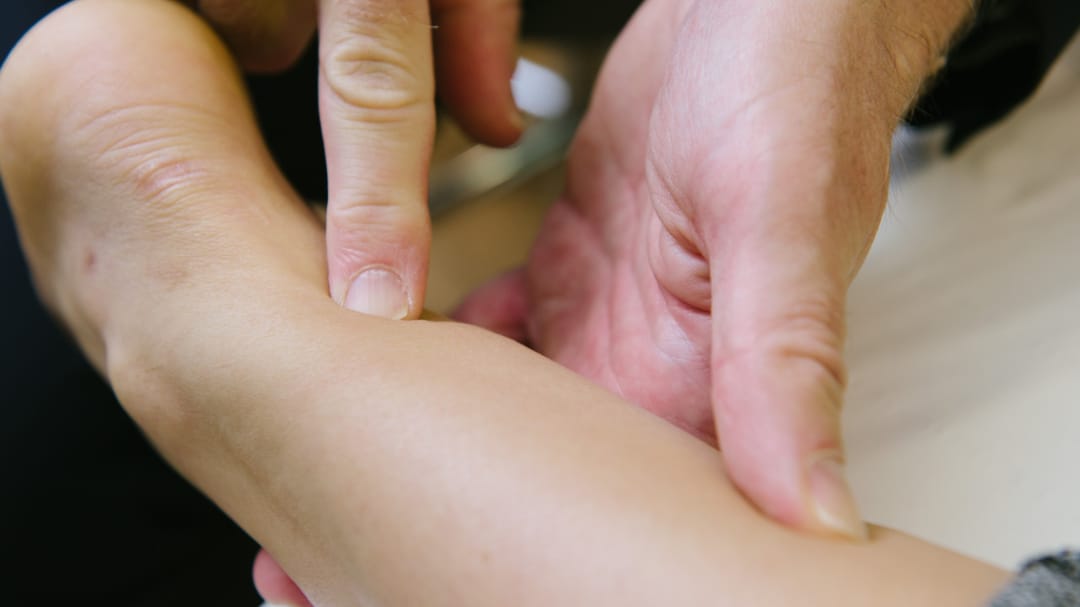The Many Causes of Heel Pain

Pure Sports Medicine
- 6 August, 2020
- Foot Health
- Pain Management
- 4 min read
The Many Causes of Heel Pain

Heel pain is a common complaint and can occur due to a number of reasons. In this blog I will discuss 8 known conditions that cause heel pain.
Plantar Fasciitis (or fasciopathy)
Plantar fasciitis is a musculoskeletal disorder primarily affecting the fascial enthesis (the fascia ‘band’, similar to a ligament, which connects the heel bone to the base of the toes). It is poorly understood, although it is thought to have a mechanical origin. The condition is commonly associated with flat feet (pes planus) and other lower limb biomechanical anomalies, with the presumption being that tensile strain on the fascia causes microtears and changes to the tissue structure.
Heel Bursitis (subcalcaneal bursitis)
This is an inflammation of a bursa (a fluid-filled sac) under the heel bone where the pain is typically more in the centre of the heel than that experienced with plantar fasciitis and significantly worsens during the day. This condition can be caused following direct trauma to the area or repetitive stress.
Heel bumps (Haglunds deformity)
These are firm bumps on the back of the heel, usually caused by excessive shoe rubbing in the heel area, or the thickening of the tissues associated with a tight Achilles tendon attaching to the heel bone.
Tarsal Tunnel Syndrome
This can feel like a burning or tingling sensation under the heel and arch of the foot with occasional loss of sensation on the bottom of the foot. This is caused by compression of the tibial nerve as it passes the inside of the ankle. Tapping of the nerve just behind the ankle bone (known as Tinel’s test) can reproduce the symptoms.
Chronic inflammation of the heel pad
Patients with heel pad syndrome present with deep, bruise-like pain, usually in the middle of the heel, that can be reproduced with firm palpation (when a healthcare professional will use their hands to examine an injured body site). Walking barefoot or on hard surfaces exacerbates the pain. The syndrome is usually caused by inflammation, but damage to or atrophy of the heel pad can also elicit pain. Decreased heel pad elasticity with aging and increasing body weight can also contribute to the condition.
Fracture
Calcaneal stress fracture is the second most common stress fracture in the foot, following metatarsal stress fracture. A calcaneal stress fracture is usually caused by repetitive overload to the heel. Patients often report onset of pain after an increase in weight-bearing activity or change to a harder walking surface. The pain initially occurs only with activity, but often progresses to include pain when resting. Examination may reveal swelling, bruising or a point of tenderness at the fracture site. Radiography often does not initially reveal the fracture, bone scans or magnetic resonance imaging may be needed.
Sever’s Disease (calcaneal apophysitis)
Severs disease (calcaneal apophysitis) is the most common cause of heel pain in children and adolescents, usually occurring between 10 and 15 years of age. Bones grow quicker than the muscles and tendons in these patients. The tight Achilles tendon begins to pull on its insertion site with repetitive running or jumping activities, causing microtrauma to the area. There may be swelling and tenderness around the Achilles tendon insertion site, and passive movement may increase pain.
Achilles tendonosis
Heel pain can affect everyone, whatever your age, but those more commonly affected include those in middle age (over 40s age group), those who are overweight or stand for long periods of time, as well as athletes.
Treatments
If you experience heel pain, some simple self-care measures include:
- Avoid wearing ill-fitting or uncomfortable shoes – try spending as much time as you can in your trainers (running shoes)
- Wear shoes with good heel cushioning and effective arch support
- Minimise walking or exercising on hard ground
- Wear a raised heel (no more than 6-10mm higher than normal and place in both shoes to avoid asymmetry)
- Weight loss may need to be considered.
More Specialist Treatments
Plantar Fasciitis (or fasciopathy)
First-line therapies include relative rest, stretching before initial weight bearing, strengthening exercises, anti-inflammatory or analgesic (pain relief) medications, and ice. Arch taping, orthotics, or supportive shoes may be helpful. Treatment of plantar fasciitis is typically conservative, although resolution can take months to years. Night splints, corticosteroid injections, and formal physical therapy have been used for more recalcitrant cases. Extracorporeal shockwave therapy may also be of benefit.
Heel Bursitis (calcaneal bursitis)
Treatment options may include a reduction in activity, footwear modification for pressure reduction, a combination of heel lifts and/or orthotics, anti-inflammatories, and physical therapy. If the symptoms are particularly acute, a period of immobilisation may be necessary prior to attempting the aforementioned modalities.
Heel bumps
Adjustments to footwear is usually enough to make them comfortable by considering a soft heel counter. In some cases, a heel raise will assist in reducing the traction of the Achilles tenon at the side of the bump.
Tarsal Tunnel Syndrome
Initial treatment of heel pain caused by nerve entrapment includes rest, ice, anti-inflammatory or analgesic medications, relief of pressure at the site of pain (e.g., orthotics), and stretching exercises. If conservative measures are ineffective after six to 12 months, surgical decompression can be considered.
Chronic inflammation of the heel pad
A soft heel cushion can help this condition, e.g., silicone heel cup.
Fracture
Early treatment of a calcaneal stress fracture involves decreasing activity level and possibly no weight bearing. Heel pads or walking boots are also used.
Sever's Disease (calcaneal apophysitis)
Treatment involves decreasing pain-inducing activities, anti-inflammatory or analgesic medication if needed, ice, stretching and strengthening of the gastrocnemius-soleus complex, and some orthotic devices.
Achilles tendonosis
The most beneficial treatment of Achilles tendinopathy is eccentric exercises, which involve lengthening a muscle in response to external resistance. Initial treatment should also include reduction of pressure to the area, heel lifts or other orthotic devices, and anti-inflammatory or analgesic medications.
When Should I See a Podiatrist?
After following the self-care measures and there is no reduction in symptoms in 3 weeks to consider seeing your local podiatrist (unless you suspect a fracture).
References
- American Family Physician, Diagnosis of Heel Pain.
- Am Fam Physician. 2011 Oct 15;84(8):909-916.
- The College of Podiatry: https://cop.org.uk/

Advice
Over the last 20+ years our experts have helped more than 100,000 patients, but we don’t stop there. We also like to share our knowledge and insight to help people lead healthier lives, and here you will find our extensive library of advice on a variety of topics to help you do the same.
OUR ADVICE HUBS See all Advice Hubs

